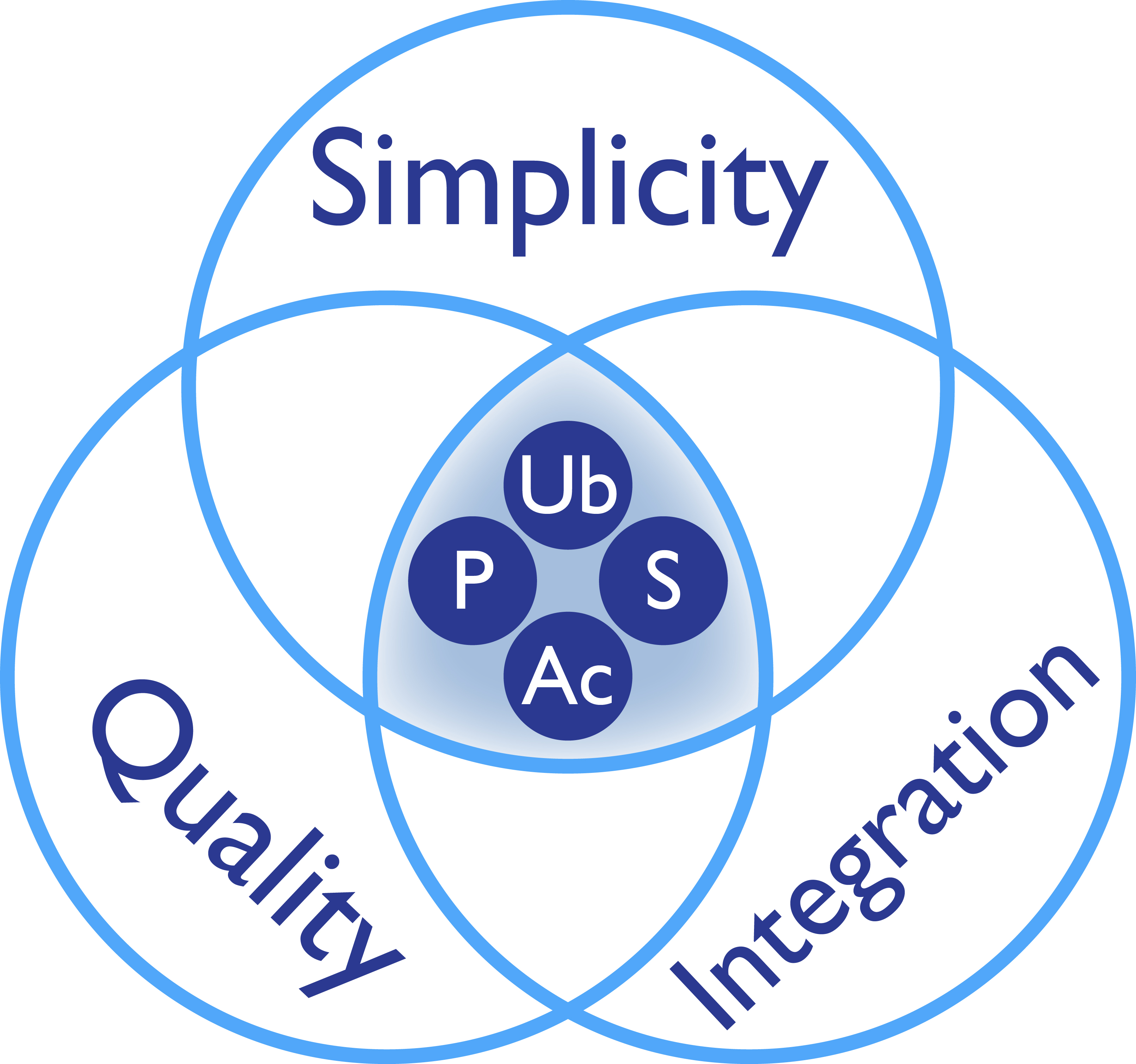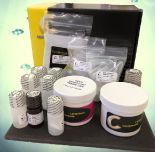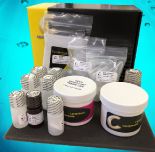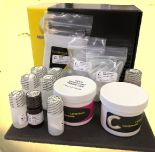Signal-Seeker™ SUMOylation 1 Detection Kit (30 assay)
The Signal-Seeker™ line of produts have been developed to allow simple analysis of key regulatory protein modifications by specialists and non-specialists alike. The comprehensive Signal-Seeker™ kits provide an affinity bead system to isolate and enrich modified proteins from any given cell or tissue lysate. The enriched protein population is then analyzed by standard western blot procedures using a primary antibody to the target protein.
Product Uses Include
- Investigate transient regulatory mechanisms
- Measure signalling events of multiple pathway member proteins
- Discover new modifications of your protein of interest
- Gain insight into regulatory mechanisms
- Measure endogenous or transiently expressed protein signalling events
Validation Data: see datasheet
Kit contents
The SUMOylation 1 kit contains the following components:
| Lysis and protein quantitation step | IP and pre-clear step | Wash step | Elution step | Western step |
BlastR™ Lysis Buffer BlastR™ Dilution Buffer BlastR™ Filters Protease Inhibitor Cocktail De-SUMOylation inhibitor Cocktail Precision Red™ Protein Assay Reagent | SUMOylation 1 Affinity Beads IP Control Beads
| BlastR™ Wash Buffer
| Spin Columns Bead Elution Buffer
| Chemiluminescent Reagent A Chemiluminescent Reagent B Anti-SUMO1 antibody
|
Example results
There are many applications for these kits, here we describe an interesting example:
Application 1: Investigate significant SUMOylation 1 events
Immunoprecipitating total SUMO1 profiles using the Signal-Seeker™ SUMOylation 1 Detection Kit compared to older SUMO1 tools (A) HAP1 wildtype (WT) or SUMO1 knockout (KO) lysate, was obtained using BlastR lysis and filter system. 1 mg of each lysate were incubated with 40 µg of each SUMO1 affinity reagent: ASM11-beads (Cytoskeleton), 21C7 (Invitrogen—purified), 21C7 (DSHB—supernatant), D11-beads (Santa Cruz) and conjugated SUMO1 IgG control beads (CIG03). 21C7 antibodies were captured with protein G agarose beads to enrich for SUMO-1 modified proteins. Samples were separated by SDS-PAGE and transferred to PVDF. Enriched SUMO1 samples were analyzed by western blot using ASM01 (Cytoskeleton) antibody at 1:5000, and mouse Trubelot Ultra-HRP secondary at 1:1000 in 5% milk. Trueblot secondary was used to minimize heavy and light chain detection from 21C7 samples. (B): IP was performed using ASM11 as in Fig 1A. SUMO1 modified proteins were visualized with ASM01 1:5000, and anti-mouse secondary at 1:20,000 to highlight the profile of SUMOylated proteins in the region between 64-30 kDa that may be masked by heavy and light chain interference when using unconjugated antibodies for IP. |
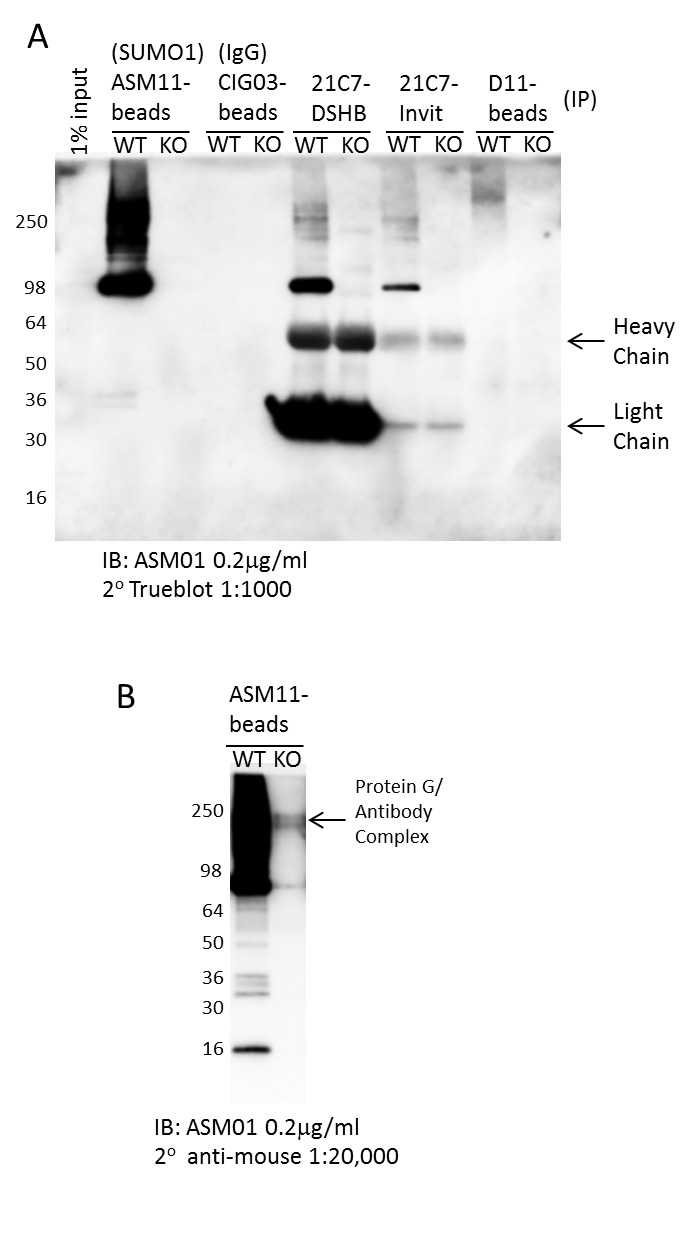
HAP1 wildtype (WT) or SUMO1 knockout (KO) lysate, was obtained using BlastR lysis and filter system. 1 mg of each lysate were incubated with 40 ug of each SUMO1 affinity reagent: ASM11-beads (Cytoskeleton), 21C7 (DSHB—supernatant), and conjugated SUMO1 IgG control beads (CIG03). 21C7 antibodies were captured with protein G agarose beads to enrich for SUMO-1 modified proteins. Samples were separated by SDS-PAGE and transferred to PVDF. Target proteins: (A) TFII-I, RanGAP1, and (B) schmd1 were analyzed for their SUMO1 modified forms by western blot. Anti-rabbitHRP labeled secondary antibody was used at 1:10,000. All three primary antibodies are rabbit polyclonal antibodies, and should not bind heavy and light chain fragments from the IP antibody. |
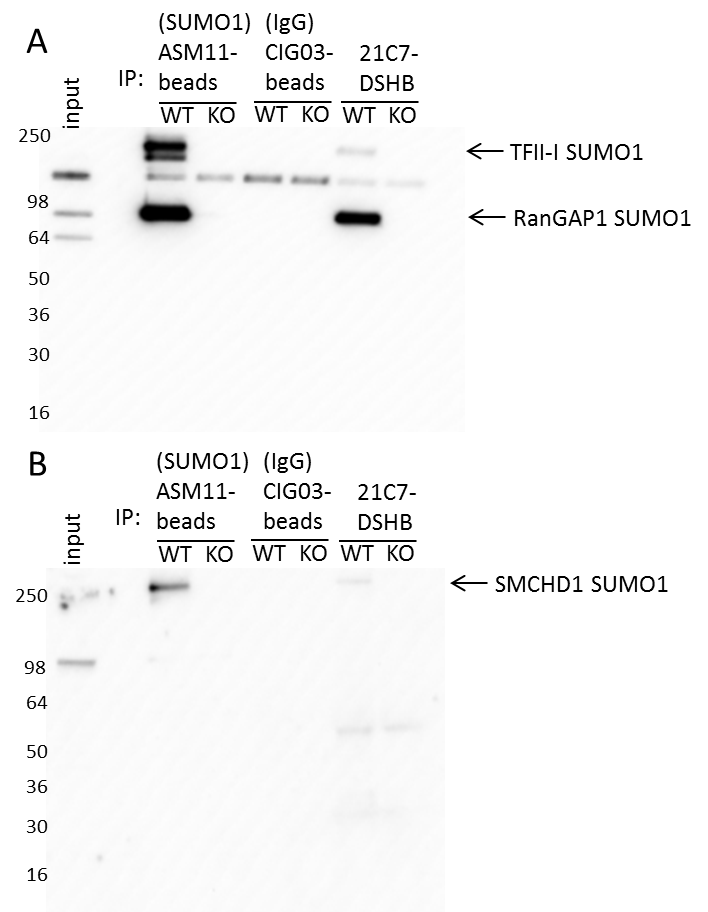
• Pharmacological investigation of SUMOylating and de-SUMOylating enzymes involved in regulation of target proteins.
• Investigate SUMOylation under a variety of different growth factors or drug treatments.
• Examine the interaction of SUMOylated target proteins with its downstream effectors.
• Examine crosstalk between SUMOylation 1 and other PTMs for target proteins.
For more information contact: signalseeker@cytoskeleton.com
Associated Products:
Signal-Seeker™ SUMOylation 2/3 Detection Kit (Cat. # BK162)
Signal-Seeker™ Ubiquitination Detection Kit (Cat. # BK161)
Signal-Seeker™: BlastR™ Rapid Lysate Prep Kit (Cat. # BLR01)
Signal-Seeker™ SUMOylation 2/3 Affinity Beads (Cat.# ASM11-beads)
Signal-Seeker™: PTMtrue™ SUMOylation 2/3 Antibody (Cat.# ASM01)
Visit our Signal-Seeker™ Tech Tips and FAQs page for technical tips and frequently asked questions regarding this and other Signal-Seeker™ products click here
If you have any questions concerning this product, please contact our Technical Service department at tservice@cytoskeleton.com

